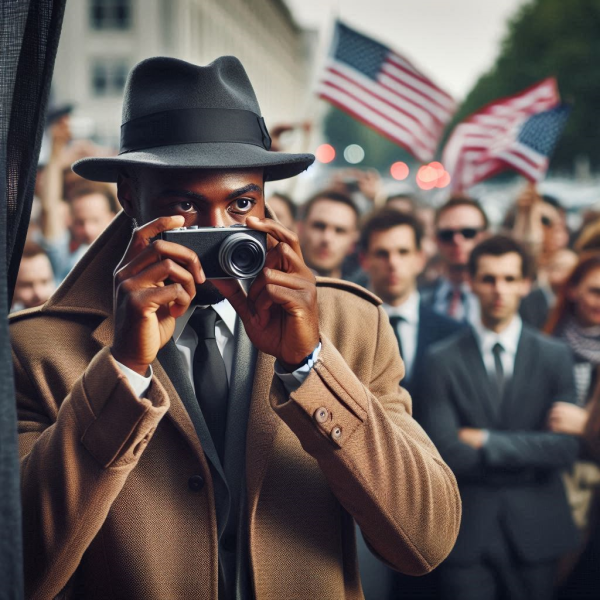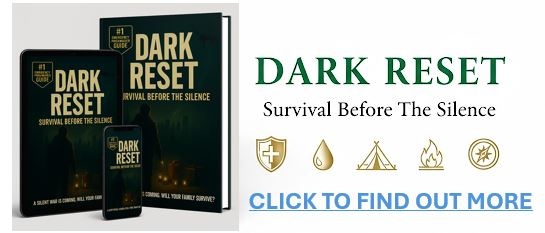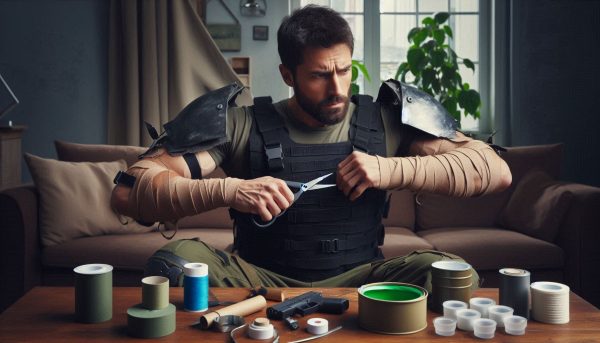By adopting the observational techniques of the elite CIA, you can significantly enhance your awareness and personal security. The CIA embodies a standard of excellence, precision, and unwavering commitment to protection. Their ability to anticipate and neutralize threats stems from rigorous training and razor-sharp observational skills.
When you envision a CIA agent, you likely picture a composed, sharp-dressed individual. But beneath the surface lies a highly trained professional, skilled in the art of observation and threat detection. This guide explores how you can adopt these techniques to enhance your own situational awareness.

Unmasking Intentions: The Art of Profiling
Profiling, in the context of security, is the practice of analyzing human behavior to identify potential threats. By observing subtle cues and patterns, skilled professionals can anticipate actions and make informed decisions.
Establishing a Baseline: Understanding Normal Behavior
To effectively profile individuals and situations, it’s essential to establish a baseline of normal behavior. This involves understanding the typical actions, movements, and interactions within a specific context. By familiarizing yourself with these patterns, you can quickly identify deviations that may indicate potential threats or opportunities.
Pro Tip: Spend time observing routine activities in familiar places. Pay attention to the subtle nuances of human behavior, such as body language, facial expressions, and speech patterns. By recognizing what is considered normal, you can more easily spot anomalies.
Understanding the Human Element: Psychology and Culture
Effective profiling requires a deep understanding of human psychology and cultural nuances. Different cultures have distinct norms and behaviors, while psychological factors like stress, anxiety, or mental health conditions can significantly impact an individual’s actions.
Pro Tip: Educate yourself on basic psychological principles and cultural differences. By understanding how these factors influence behavior, you can better interpret actions and avoid misinterpretations.
Assessing Risk and Prioritizing Threats
Not all anomalies pose a significant threat. To effectively assess risk, consider the context, severity, and potential consequences of the observed behavior. Develop a mental checklist to evaluate each situation and prioritize your response.
Pro Tip: Ask yourself: Does this behavior pose an immediate threat? Is the individual acting alone or as part of a group? Are there any visible indicators of intent, such as weapons or suspicious objects?
Identifying Changes to Spot the Unusual
Once you’ve established a baseline of normal behavior, the next step is to identify any deviations from this norm. These deviations, whether subtle or overt, may indicate potential threats or suspicious activity.
Pro Tip: Practice your observation skills by paying attention to people’s behavior in different settings. Look for individuals who appear nervous, avoid eye contact, or behave in a way that seems out of place.
By honing your ability to spot anomalies, you can proactively identify potential threats and take appropriate action.

Mastering Situational Awareness
Situational awareness is the foundation of effective security and intelligence operations. By developing this skill, you can anticipate potential threats and opportunities, making informed decisions in dynamic environments.
To cultivate situational awareness, practice active observation, pay attention to details, and trust your instincts.
Scanning Your Surroundings
To maintain situational awareness, it’s crucial to constantly scan your environment. Pay attention to details such as exits, entrances, potential threats, and the behavior of those around you. When entering a new space, take a moment to assess the layout and identify potential hazards. Remember to shift your focus between near and far objects to gain a comprehensive view of your surroundings.
Stay Present, Stay Aware
To maintain situational awareness, it’s crucial to stay present in the moment. Minimize distractions like smartphones and focus on your surroundings. By being fully engaged, you can better detect subtle changes and potential threats.
Mindfulness for Enhanced Awareness
Mindfulness practices, such as meditation and deep breathing, can significantly improve your ability to stay present and focused. By reducing stress and enhancing your mental clarity, you can develop a heightened sense of awareness.
Follow Your Instincts
Human intuition is a powerful tool for survival. Your subconscious mind often picks up on subtle cues that your conscious mind might miss. When you feel a sense of unease or danger, don’t dismiss it. This could be your intuition alerting you to potential threats. By trusting your instincts and paying attention to your surroundings, you can enhance your situational awareness and make informed decisions to protect yourself.
Cultivate these skills to enhance your situational awareness. By practicing them regularly, you’ll be better equipped to navigate any environment, from busy marketplaces to familiar neighborhoods.

See Beyond the Surface
Observation is more than just looking; it’s about actively perceiving and interpreting your surroundings. By paying close attention to details, understanding context, and recognizing subtle cues, you can enhance your awareness and identify potential threats or opportunities.
Contextual Awareness
Effective observation requires understanding the context of a situation. What may seem unusual in one setting might be perfectly normal in another. By analyzing the context, you can better interpret behavior and identify potential threats.
Pro Tip: Practice observing different environments and identify the typical behaviors associated with each. This will help you recognize anomalies and potential threats.
Reading Between the Lines When People-Watching
People-watching is a valuable skill for anyone seeking to enhance their observation abilities. By paying attention to nonverbal cues such as body language, facial expressions, and gestures, you can gain insights into people’s intentions and emotions.
Pro Tip: Practice your people-watching skills in public settings. Observe people’s behavior and try to identify any unusual patterns.
Engage All Your Senses
Observation isn’t just about sight. Engage all your senses to gain a comprehensive understanding of your surroundings. Pay attention to sounds, smells, and even subtle changes in temperature. By using all your senses, you can identify potential threats and opportunities that may go unnoticed.
Pro Tip: Take a moment to consciously engage your senses, especially when entering a new environment. Close your eyes and listen to the sounds, notice any distinct smells, and feel the temperature and humidity. This will enhance your overall situational awareness.
Remembering What Matters
A sharp memory is a valuable asset for any observer. By memorizing key details about your surroundings and the people within them, you can quickly identify anomalies and potential threats.
Pro Tip: When entering a new environment, take a mental snapshot of the layout, exits, and individuals present. Periodically test your memory by visualizing the scene in detail.
Keep Training
Just like CIA agents, continuous learning is essential for honing your observation skills. By seeking out new information, practicing regularly, and staying curious, you can continually improve your ability to perceive and interpret your surroundings.
- Scenario Planning: Practice responding to various emergency situations through mental simulations.
- Mindfulness Practices: Engage in mindfulness exercises, such as meditation, to enhance focus and awareness.
- Knowledge is Power: Stay informed about the latest security threats and best practices.
Seeing the world like a CIA agent involves cultivating a heightened sense of awareness and a mindset of preparedness. By incorporating these techniques into your daily life, you can enhance your personal safety and navigate the world with confidence.
Remember, the goal is not to live in fear, but to be prepared. By being aware of your surroundings and trusting your instincts, you can navigate the world with a sense of security and calm.




